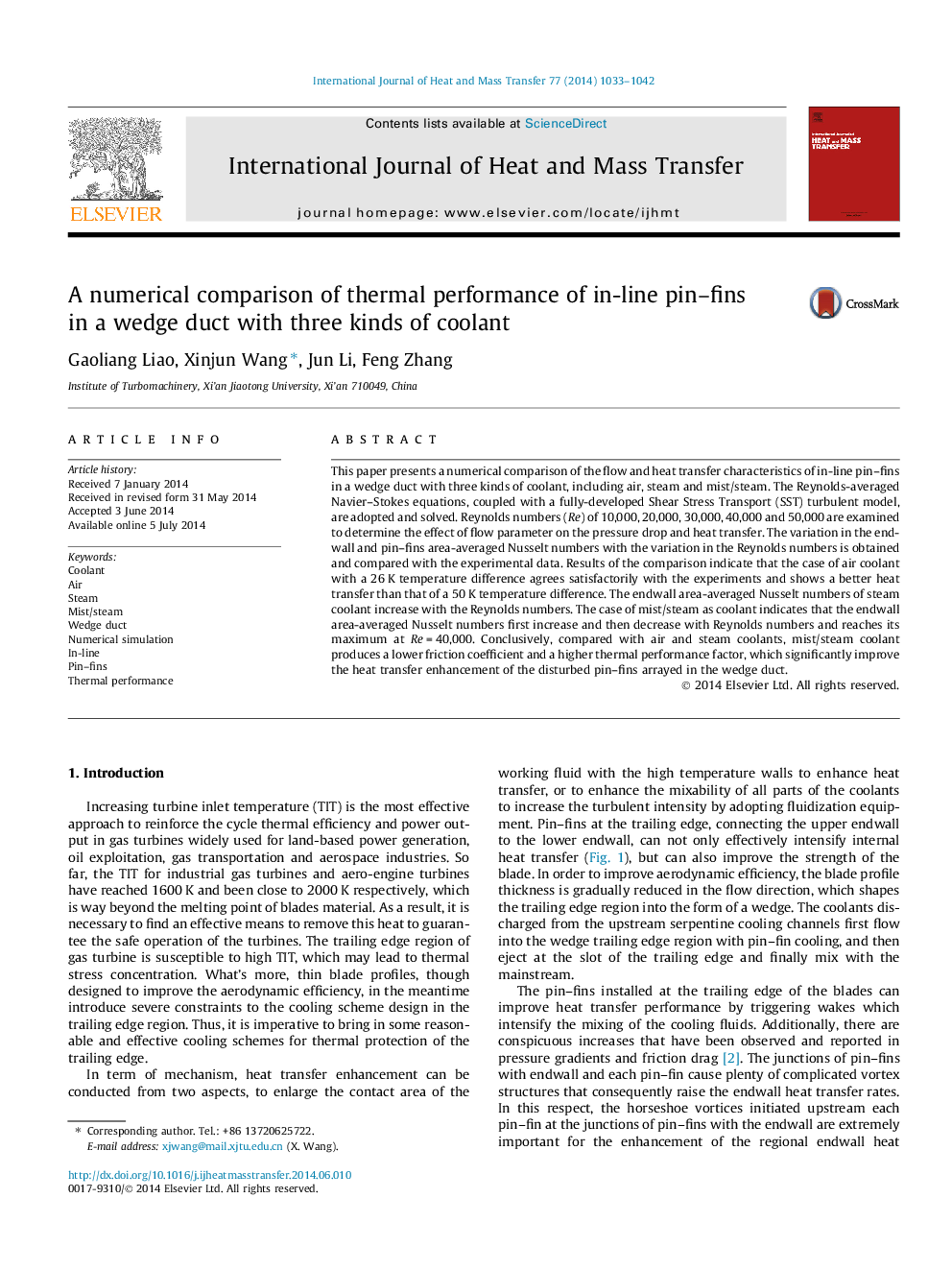| Article ID | Journal | Published Year | Pages | File Type |
|---|---|---|---|---|
| 657853 | International Journal of Heat and Mass Transfer | 2014 | 10 Pages |
This paper presents a numerical comparison of the flow and heat transfer characteristics of in-line pin–fins in a wedge duct with three kinds of coolant, including air, steam and mist/steam. The Reynolds-averaged Navier–Stokes equations, coupled with a fully-developed Shear Stress Transport (SST) turbulent model, are adopted and solved. Reynolds numbers (Re) of 10,000, 20,000, 30,000, 40,000 and 50,000 are examined to determine the effect of flow parameter on the pressure drop and heat transfer. The variation in the endwall and pin–fins area-averaged Nusselt numbers with the variation in the Reynolds numbers is obtained and compared with the experimental data. Results of the comparison indicate that the case of air coolant with a 26 K temperature difference agrees satisfactorily with the experiments and shows a better heat transfer than that of a 50 K temperature difference. The endwall area-averaged Nusselt numbers of steam coolant increase with the Reynolds numbers. The case of mist/steam as coolant indicates that the endwall area-averaged Nusselt numbers first increase and then decrease with Reynolds numbers and reaches its maximum at Re = 40,000. Conclusively, compared with air and steam coolants, mist/steam coolant produces a lower friction coefficient and a higher thermal performance factor, which significantly improve the heat transfer enhancement of the disturbed pin–fins arrayed in the wedge duct.
